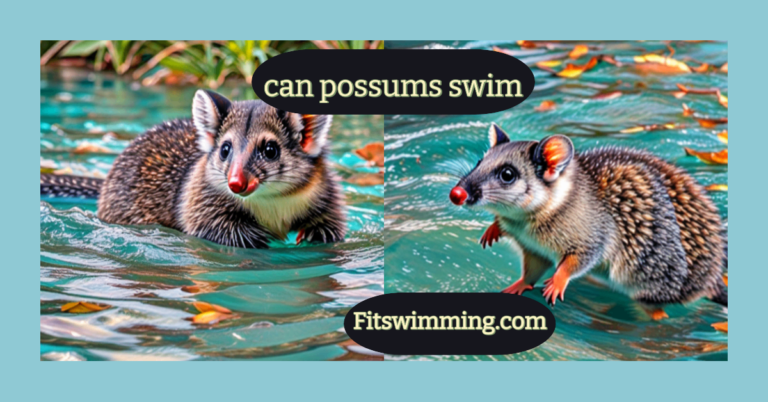Can Ants Swim? Interesting Facts
Ants, those tiny creatures with incredible strength, are fascinating insects. You might have wondered, “Can ants swim“? In this article, we’ll look closely at ants and check out how well they can do in the water. Ants, like all insects, have an exoskeleton—a hard outer layer. This special thing is important in deciding whether ants can swim. The exoskeleton is covered in a water-repellent waxy coating, making water interaction intriguing.
Can Ants Swim
Yes, ants can swim to some extent. While not all ant species are natural swimmers, many are capable of navigating through water. Ants have a waxy coating on their exoskeletons that repels water, allowing them to stay afloat. Some ants can even form rafts by linking together, creating a structure that helps them float on water surfaces. This ability is particularly useful during times of flooding or when ants need to cross small bodies of water in search of food or suitable nesting sites. Swimming proficiency can vary among different ant species.
Adaptations for Survival
Ants that can swim have evolved specific adaptations for survival. Their ability to float helps them escape floods, cross small bodies of water, and find food. Some ant colonies even use their swimming skills to relocate when their nests are threatened by water.
Can Ants Float
Yes, some ants can float! The water-repellent coating on their bodies allows them to stay afloat, making it possible for them to navigate across water surfaces. This adaptation is particularly useful during heavy rains or when they encounter water obstacles in their foraging journeys.

Interesting Ant Swimming Facts
Ants exhibit some fascinating behaviors when it comes to swimming. Here are some interesting ant swimming facts:
Floating Rafts: Certain ant species, like the red imported fire ant (Solenopsis invicta), can create living rafts by linking them together. In times of flooding, these ants connect their bodies to form a floating structure that allows them to survive on the water’s surface.
Hydrophobic Exoskeleton: Ants have hydrophobic exoskeletons, which means they repel water. This means ants naturally can float on water and move around in it.
Air Bubbles for Survival: Some ants, when submerged in water, can trap air bubbles on their bodies. These air pockets serve as a temporary source of oxygen, enabling the ants to survive for longer periods underwater.
Adaptive Swimming Behavior: Ants can exhibit different swimming behaviors based on their role within the colony. For example, worker ants may display specific swimming adaptations compared to the queen or male ants.
Escape from Predators: Swimming can be a survival strategy for ants when faced with threats from predators on land. By navigating water bodies, ants may escape from predators that cannot pursue them effectively in aquatic environments.
Colony Relocation: In some cases, ants use their swimming abilities for colony relocation. If their nest is threatened or flooded, ants may move the entire colony across the water to establish a new nest.
Collective Behavior: When ants hold onto each other and make floating rafts, it’s a cool way they work together as a group. This strategy helps the entire colony float and survive adverse conditions.
Can Ants Swim in Oil
Ants cannot swim in oil. Oil is a non-polar substance, and ants, like many insects, have hydrophobic (water-repellent) exoskeletons. However, this hydrophobic property doesn’t necessarily translate to oil-repellent behavior.
When ants come into contact with oil, their bodies can become coated with the substance, making it difficult for them to move and disrupting their ability to respire through small pores in their exoskeleton. Oil can clog these pores, leading to suffocation.
Can Ants Swim in Hot Water
Ants generally cannot swim in hot water. The ability of ants to survive in water, including hot water, depends on various factors such as the ant species, temperature, and exposure duration. It’s interesting to note that termites, often mistaken for ants, exhibit different behaviors. Termites are not ants; they’re in a different group of insects called Isoptera. But interestingly, termites can handle water, even hot water, better than ants.
Termites are equipped with a unique cuticle that helps them resist desiccation and provides some water resistance. In certain situations, termites can survive and even navigate through water, including hot water, for a limited period.
Can Ants Swim in Soapy Water
Ants cannot swim effectively in soapy water. Soap breaks down the surface tension of water, making it difficult for insects like ants to stay afloat. When ants come into contact with soapy water, the water penetrates their exoskeleton, disrupting the water-repelling properties that normally keep them buoyant.
The breakdown of surface tension in soapy water essentially removes the support that allows insects to float. As a result, ants are likely to sink in soapy water, and the soapy solution can also interfere with their respiratory system, making it challenging for them to breathe.
Conclusion: Can Ants Swim? Interesting Facts
In conclusion, ants indeed have surprising swimming abilities. Their adaptation to water showcases the incredible diversity within the ant world. The next time you spot ants near water, take a moment to appreciate their resilience and resourcefulness in navigating the watery obstacles of their tiny world.
FAQ’s
Yes, ants can survive in water for a limited time. Their ability to stay afloat is due to the hydrophobic nature of their exoskeletons, which repels water. Some ant species can even form floating rafts in response to flooding, showcasing their adaptability to aquatic environments.
Yes, ants do drink water. They obtain water from various sources, including their food, as well as by actively seeking out water in their environment. Ants have a specialized social stomach that allows them to store and transport liquids, helping them bring water back to their colony.







